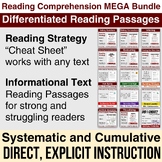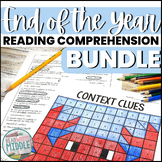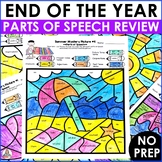21 results
Common Core L.3.2 scaffolded notes for ESL-EFL-ELL
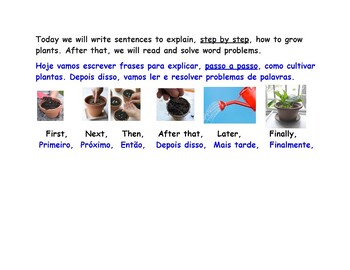
Plants: How Do They Grow? How Do They Help Us?
These resources support students as they learn to identify parts of a plant and their functions, to describe (orally and in writing) the planting and growing process, and to explain how we use plants to get or create the things we need. Plant themed word problems are also included. Some resources are translated into Portuguese, Spanish, and French. Resources can be printed as handouts, word banks, and paper/pencil tasks. They can also be displayed or assigned, using the links provided.Suggestion
Subjects:
Grades:
1st - 4th
NGSS:
1-LS1-1
, 2-LS4-1
, 2-LS2-1
, 1-LS3-1

Prefixes and Character Traits
These resources support students as they learn how word meanings change when prefixes are added. Lists of positive and negative character traits build vocabulary and can be used to describe people and literary characters. Questions/exercises provide practice to help student improve and/or master skills. Pages can be printed for paper and pencil tasks or links below can be used to post information or assignments electronically. Prefixes and Character Traits ObjectivesCharacter Traits QuestionsFor
Grades:
2nd - 5th

Apollo 11 Voyage to the Moon: Summary of Events with Translations
These nonfiction resources support students as they learn about the Apollo 11 voyage to the moon. Information is presented in English, Portuguese, and French. Vocabulary is also in Spanish. These resources are useful for reading comprehension, learning academic vocabulary, and becoming familiar with nonfiction text features. Students will have the opportunity to identify facts and to learn about nonfiction text features. Visuals, translated word banks, and written questions are provided, along w
Subjects:
Grades:
2nd - 5th
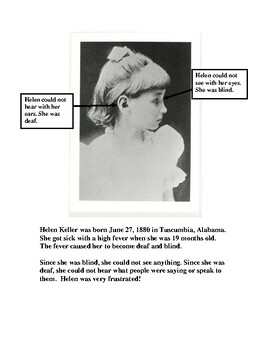
Helen Keller
These resources provide nonfiction information about Helen Keller in book form. The books are provided in English, Portuguese, and French. Each page provides facts about Helen Keller, along with visuals and captions. Follow up resources include written questions, graphic organizers, and writing templates. Also included are links to videos of Helen Keller, made during her lifetime.Helen Keller (English)Helen Keller (English and Portuguese)Helen Keller (English and French)Helen Keller Questions H
Subjects:
Grades:
2nd - 5th
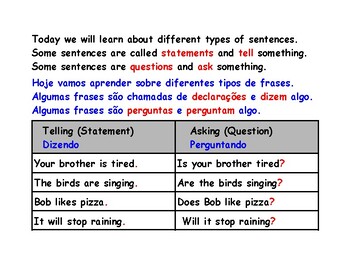
Sentence Types: Changing Statements to Questions
These resources support students as they learn to tell the difference between statements and questions and the types of punctuation needed for them. Students will learn to identify subjects, predicates, and verbs. They will also distinguish between verbs that show action and verbs that show "being" a.k.a. linking verbs. These resources will demonstrate the difference between yes/no questions (ie: Do you like apples?) and Wh-questions (ie: Where do you live?)Students will learn how to change sta
Grades:
1st - 4th
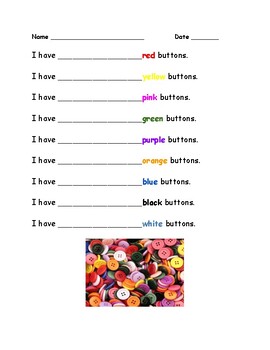
How Many? Colors, Counting, and Data Tables
These resources support students as they learn to identify colors and numbers. Two resources are appropriate for students in kindergarten, first, and second grade, while the third resources is appropriate for older students who are ready to read and interpret tables of information related to the number of buttons a variety of students have. I have included resources that can be printed and distributed for paper and pencil tasks. I have also included a link to the Google Slides data table informa
Subjects:
Grades:
K - 3rd
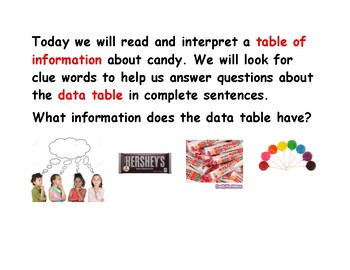
Math: Reading and Interpreting Candy Data Table
These resources support students as they learn to read and interpret tables of information in a fun way. Students will practice both oral language skills and math proficiency as they identify, compare, and contrast information presented in the candy table of information. Students will also read and answer questions in complete sentences. Translations are provided in Spanish and Portuguese for these tasks. I am including resources that can be printed as well as links to present and/or assign reso
Subjects:
Grades:
1st - 4th
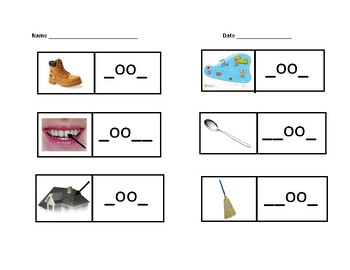
Phonics Practice: Decoding and Encoding Words with /oo/
These resources support students as they learn to decode and encode words with /oo/ as in "foot" and /oo/ as in "pool". Visuals encourage students to identify words that contain target sounds. Resources are provided as printables for paper and pencil tasks, as well as provided via links so they can be displayed on the Smartboard or assigned electronically. Also included is an interactive Google Jamboard./oo/ Visuals/oo/ Google Jamboard/oo/ Google Jamboard Sentence MatchWrite Words with /oo/ as i
Subjects:
Grades:
K - 3rd
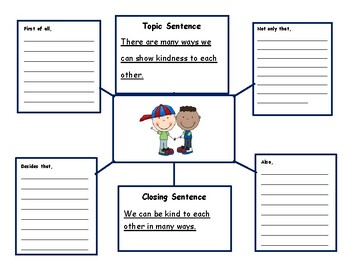
Graphic Organizers
These resources will support students as they learn to organize their writing for a variety of purposes. Graphic organizers are provided that include transition words, story grammar vocabulary, opportunities to paraphrase and cite evidence from the text. You can tweak the "Acts of Kindness" or the "I know Many Facts About" organizers, using these links. You can replace the pictures in the middle with whatever you choose.Acts of Kindness Graphic OrganizerI Know Many Facts About
Grades:
1st - 4th
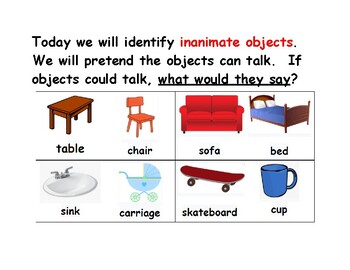
Inference Practice
These resources introduce inferencing/drawing conclusions with identifying everyday inanimate objects and imagining what they might say if they could talk. Labeled visuals provide English learners with written vocabulary and word banks provide support for writing tasks. Students are asked to read "What am I?" passages and based on the clues/text evidence, are asked to identify the object that is "talking". These tasks reinforce reading comprehension and inferencing skills. Students may use visu
Subjects:
Grades:
1st - 4th
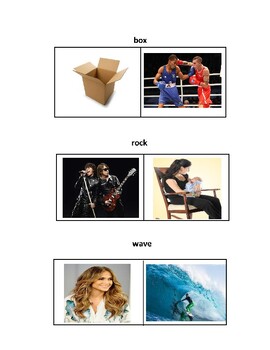
Multiple Meaning Words
These resources support students as they learn to identify multiple meaning words and use them in a variety of contexts. Students can practice composing oral and written sentences in complete sentences, with subject verb agreement, using multiple meaning words. A fun project after a multiple meaning unit has been completed is for students to create "flipbooks" in which they write sentences and illustrate what words can mean in different contexts. Colorful resources can be printed and distribute
Grades:
1st - 4th
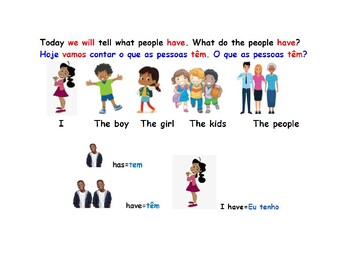
Subject-Verb Agreement: What Do They Have?
These resources support students as they acquire expressive and receptive language and literacy skills. Colorful picture prompts motivate students to produce oral responses. Along with pictures, translations and word banks assist students as they produce oral and written sentences with subject-verb agreement. Resources can be printed for paper and pencil tasks, displayed on a Smartboard, or assigned electronically using these links. Have or Has VisualHave or Has (Subject-Verb Agreement Visual))H
Subjects:
Grades:
1st - 4th
Also included in: Subject-Verb Agreement: What Do you Like? Have? Want? Need?

Verbs: Future Tense
These resources support students as they build expressive and receptive oral language and literacy skills. Pictures, translations, and written examples for guided practice demonstrate how the future tense is written in English. Future tense time phrases are compared in a chart to past tense time phrases. Students practice using calendars to identify events that will happen in the future. One calendar activity has both past tense and future tense events depicted. Resources can be printed and di
Grades:
1st - 4th

Possessive Adjectives: Part 2
These resources support students as they learn to use singular and plural subject pronouns and possessive adjectives in a variety of contexts. They are also introduced to using apostrophe s to indicate possession. Colorful pictures and many examples provide guided practice for students before they attempt to complete follow up exercises. These resources can be printed and handed out for paper and pencil tasks or they can be assigned electronically, using these links.Possessives: Student Exercis
Grades:
1st - 4th

Sequence Writing: How Do You Bake A Cake?
These resources support students as they learn to use sequence vocabulary to describe how to bake a cake. Colorful images encourage students to use adjectives to describe, both orally and in writing, the type of cake they'd like to make. Follow up word problems challenge to choose the operation needed to successfully solve each problem. Baking cakes lends itself to word problems related to elapsed time. Timelines are included as visuals to assist students in thinking through each problem.
Subjects:
Grades:
1st - 4th
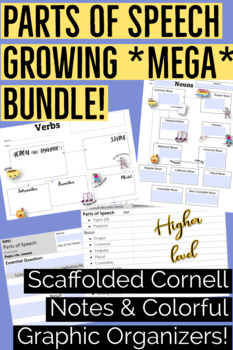
Growing *MEGA-BUNDLE* w/ PARTS OF SPEECH for ELLs off all ages & MS!
I have brilliant students with serious gaps in knowledge, so I have been assembling materials from the ground-up to equip them with the language of English grammar that they need to understand how to structure their writing and to excel on IELTS, TOEFL and similar exams. This mega-bundle is the result of my efforts, and I will add ADJECTIVES, ADVERBS, PRONOUNS, and PREPOSITIONS by year's end.For now, this bundle includes: a simple overview of the parts of speech in two levels of Cornell Notes. I
Grades:
3rd - 12th, Adult Education
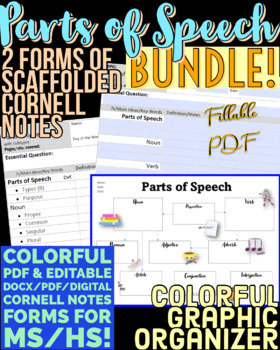
VISUAL G.O. & Cornell-Notes PARTS OF SPEECH bundle! Scaffolded, good for ELLs!
At the end of the last school year, I found myself wishing I had a simple overview of the parts of speech to help my students review basics for the final exam. I know that terms + definitions and examples aren't enough for in-depth application, so this bundle is meant to be an introduction and/or review of parts of speech in a visual and linear (in the case of Cornell Notes) way.The GRAPHIC ORGANIZER suggests how terms are used, with prepositions between nouns and verbs since there are both prep
Grades:
3rd - 12th, Adult Education
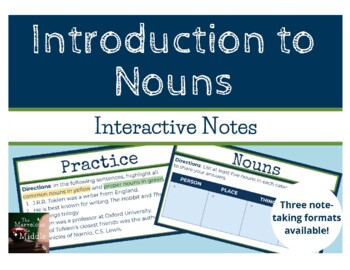
Introduction to Nouns: Interactive Notes
This activity not only thoroughly introduces nouns and some of the grammatical rules that apply to them, but also provides a scaffold for students who are learning to take notes in order to record their learning and for students to use as a reference to aid in their continued growth and learning.This lesson teaches students how to identify nouns and the differences between common and proper nouns. This lesson also provides students with the opportunity to show their understanding.This product in
Grades:
3rd - 6th
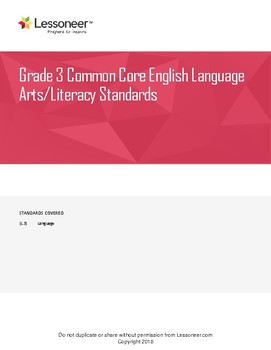
Sentence Frames, Vocabulary, and More for 3rd Grade ELA Language Standards
This Building Blocks pack contains extra information to make standards implementation easier! Specific to each standard, you'll find Unpacked Concepts & Skills, Academic Vocabulary in English and Spanish, and Sentence Frames for 3 levels of English language acquisition. Use our Building Blocks to create and/or supplement standards-aligned lessons and assessments. This pack contains all the Language standards for English Language Arts 3rd Grade.
Grades:
3rd
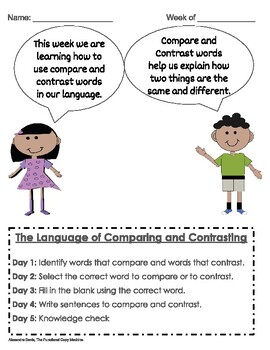
Language of Comparing and Contrasting: Guided Mini-Lessons and Knowledge Check
Are your students studying Compare and Contrast? Use this guided mini-lesson, scaffolded notes packet to model a short writing mini-lesson everyday using compare and contrast signal and transition words. This resource has five days worth of short, slow release writing mini-lessons meant to only take 10-12 minutes in an "I do, we do, you do" fashion.Day 1: Identify compare and contrast words in writing Day 2: Choose the correct compare and contrast word (multiple choice) Day 3: Fill in the blank
Grades:
2nd - 5th

Scaffolding Vocabulary for ELLs
Students will be able to
-Develop ways to identify the words they don't know
-Develop strategies for getting their meaning.
- Recognize the language structures or common associations of vocabulary. For example, "woof, woof” is a sound related to dogs, or "boom" to a loud sound or an "explosion"
Subjects:
Grades:
1st - 5th
Showing 1-21 of 21 results

